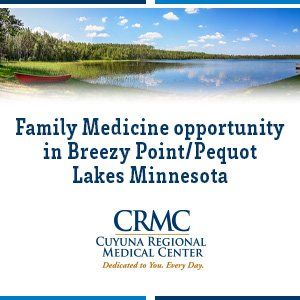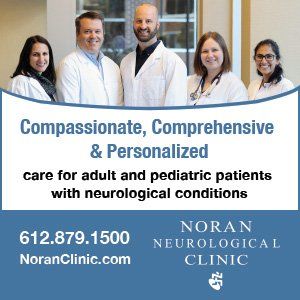urses have a crucial role in health care, serving as the mycelia that connects, communicates, supports and intervenes on multiple aspects of patient care. Mycelium (plural mycelia) is a root-like structure of a fungus that is made up of a large mass of branching, thread-like hyphae that are far-reaching, connected and critical to the health of nearly every species of plants, as well as to animals. This comparison of nursing to mycelium highlights the complex network that nurses compose and operate within, being responsible for “transporting critical nutrients and communication across various species.” Nurses provide essential health care services in diverse brick and mortar, virtual, community, work and home-based settings, offering round-the-clock care, care coordination, support, advocacy and education with our diverse health care team members, colleagues and stakeholders. Nurses are similar to mycelium in their ability to adapt and respond to changing conditions as they nourish, heal and communicate.
cover story two
Generation Now Nursing
Redefining the value proposition
BY CAROLYN PORTA, PhD, RN, MPH, FAAN
With advancing technologies, treatments and disease processes, nurses are constantly learning and adapting their skills to deliver optimal preventive, curative and supportive healthcare. Amid the technology and “mechanization” of health care, nurses are a stable force for patients, delivering fast-paced, complex, evidence-based and high demand physical and emotional patient care. Nurses are also often best positioned to offer realistic and honest assurances, sometimes a hug or a hand to briefly hold, while always striving to create safe, welcoming and “home-like” environments. We are routinely the first health care team member to notice or hear about changes in patients’ conditions and to then alert physicians or other health care team members to potential issues or needed interventions. We know early detection is critical for preventing adverse events and improving patient outcomes. We also know that when health care team communication and coordination is healthy and multi-directional, we effectively bridge the gaps among preventive care, life-saving acute care, rehabilitative or chronic care efforts and the next stage of restoration— recovery or end-of-life care. When communication pathways are not healthy, we threaten our value-based care delivery and we risk errors, extended stays, rehospitalizations and decreased patient and family satisfaction and health.
Nurses are a stable force for patients..
Threats to our Health Care Ecosystem
Differential diagnoses are a critical part of the diagnostic problem-solving process in health care. Similarly, identifying the root causes of communication breakdowns within health care teams requires a systematic approach which considers all possible contributing factors and rules out distractions. One factor we know contributes to communication breakdown among physicians, nurses and other health care team members is the persisting and unsafe staffing ratios. The COVID-19 pandemic uniquely exaggerated the complex and dangerous dynamics behind staffing decisions.
Examining the full complexity of the contributing factors to staffing problems is well beyond the scope of this article, but needs to be briefly addressed. The federal government, early in the pandemic, offered significant compensation to hospitals for patients specifically admitted to treat COVID-19. Admitting these patients rapidly in response to need and in response to an arguably unfortunate federal financial incentivization, created an urgent need for additional staffing. This need was beyond that already in play because of personal or family member infections, etc. The number of patients quickly and dramatically exceeded the average census of the intensive care units, the step-downs and the hospital itself. Core staff were doing what they could, but grew to be overwhelmed. Health care system administrators had to turn to travel agencies placing nurses and other health care workers at very high costs established within their contractual agreements; agencies were then able to offer bonuses no one could compete with. This staffing service offered immediate solutions, but had relatively quick cascading and compounding consequences—including permanent staff resigning positions to join neighboring hospitals or travel nurse agencies for the short-term financial gains. Those staff knew they would have a job to return to when they completed the short-term and high-paying travel placements. While COVID-19 presented a significant crisis moment in health care around the world, the U.S. and in Minnesota, today many of the dynamics have resolved and returned to equilibrium. For example, travel nursing has and will always offer slightly higher compensation, as it historically has compared with local markets. However, the agencies are not drawing nurses away from their permanent positions as they were in the height of the pandemic, nor are they compensating at the extremely high rates and bonuses offered when hospitalization burden was intense.
Without seeing hospital financial records (pre-pandemic to present), it’s unclear the extent to which the federal funding offset the short-term costs of labor, if at all, and how this has contributed to system financial strains. Some health care systems are clearly struggling; others are reporting record earnings. Here in Minnesota, when the state of the COVID-19 emergency subsided, the nursing unions brought attention to the persisting challenges with safe staffing and their compensation structures; they continue to do so today with some pending legislative efforts. But even with those efforts and the efforts of health care systems, an extraordinary number of nurses are choosing to leave the field of nursing altogether for all the reasons we know e.g., burnout, moral distress, fatigue, personal health, family health, health care system and leader factors, among others. This loss of any nurses, and of expert nurses particularly, is certainly exacerbating the workforce shortage, —today and as predicted.
Looking at the Challenges
Back to the problems that arise when nurses are understaffed and overworked. They may not have enough time to communicate effectively, and worse, to safely deliver the care their patients deserve and need. When communication is disrupted or inadequate, important information is being missed or misunderstood, which also negatively impacts patient care. In an ideal world, nurses would function in optimal scheduling assignments and safe staffing ratios. They would have the space and energy to take in the big picture of every patient, their needs and assets and their support system or its absence. They would put into motion all the steps and actions critical to the wellbeing of that patient and their family. Similarly, we know physicians are experiencing shortages and staffing constraints resulting in their own experiences of being overworked. This further threatens care team health and can exacerbate persisting care delivery problems. For example, one physician will outline a plan and orders that are subsequently altered by a newly assigned physician or are in contrast to the orders of another specialist, leaving the nurses and other team members struggling to discern and clarify which plan elements to carry out.
Communication breakdowns among health care teams can arise from a range of factors well beyond unsafe staffing ratios. Some of these factors include hierarchical structures within health care organizations, time constraints, team member turnover and inadequate training in effective communication and teamwork. In these inherently hierarchical settings, some nurses may be reluctant to voice their concerns or insights. Some physicians might be better positioned than their nursing team members to advocate for improved staffing ratios, to elevate systemic concerns to leadership and the C-suite and to advance culture change initiatives that prioritize open communication and collaboration.
Communication breakdowns among health care teams can arise from a range of factors.
The distinct contracts physician groups have inherently set them apart from the settings in which they deliver care; this arrangement allows for a different type of leverage with institutions and their leadership teams. Obviously, not all physicians are in this situation. For example, hospitalists are employed by the institutions like nurses and other health care disciplines and might feel similar constraints. Understandably, some physicians might not perceive they have leverage or power different from nurses or others, but many do, and should advocate for and support members of their multidisciplinary teams when opportunities to do so arise. Ultimately, physicians are prioritized to be compensated by health care institutions; as such, they are heard. Currently, the MN legislature is considering bills that would address some of the more difficult and contentious factors among nurses, unions and health care systems. Legislators and their aides welcome conversations with all stakeholders, including physicians, who can aptly describe the challenges and opportunities as seen from their valuable perspectives alongside nurses in healthcare delivery.
Time constraints in high-stress environments everywhere, and for example, in emergency departments or intensive care units, may make it challenging for health care team members to effectively communicate or collaborate, or even refer to each others’ notes in the electronic health record (EHR). The amount of “health care” time dedicated to sitting in front of a computer—for everyone—is ridiculous, and arguably driven primarily by billing and legal purposes rather than for optimizing patient care or team communication. Thankfully, this problem is in the sights of technological innovators exploring ways in which artificial intelligence and machine learning solutions can be applied to our health care delivery systems. Physicians, nurses and so many other members of our teams are obligated to complete copious amounts of documentation in EHRs (and on paper in many parts of our state and country); our equally copious amount of time studies and eye tracking studies have adequately described the problem. What we need now are solutions—solutions that allow us all to focus on what brought us to health care in the first place—that opportunity to care, to heal, to support and to bring a glimmer of light to people, families and communities experiencing difficult and dark moments.
Optimizing the Role of Nursing
As a physician, you may appreciate the analogy of the mycelial network to the health care team. Although the underground network of fungi may seem simple, it is actually highly efficient, resilient and vital to the health of the ecosystem. Similarly, a well-functioning health care team is composed of diverse individuals who work together in a coordinated and effective manner to provide the best possible care for their patients. When each member of the team fulfills their role and communicates effectively with others, the interconnected team result can be a beautiful dance of healing and connection. Mycologist Paul Stamets describes a similar interconnectivity; mycelium plays a fundamental role in forest health as it grows in the bear scratches on a tree trunk and becomes a food for the bees, which strengthens the bees’ immune systems so they then can more fully pollinate the forests, and so on.
Sadly, even our best functioning health care teams are doing so in a system that is very broken. Here in the U.S., our health care economics are not properly aligned with our health care delivery, and this must change. Hospital leadership must be at or above operational profitability. Fee-for-service payment structures persist and undermine the value-based care models we know are more effective and efficient. Prevention strategies—primary, secondary and tertiary—are undermined by reimbursement emphasis on intervention and treatment, as are strategies aimed at mitigating harmful social and structural determinants of health. Efforts to recruit and retain a healthy health care workforce are at best inadequate, and at worst, abusive. One sneak peek at nurse twitter belies the cynicism, sarcasm, frustration and disassociation with those offering pizzas, lunches, lanyards, etc. Watch how nurses are recognized during Nurses’ Week (May 6-12, 2023) and make your own assessment.
Consider the business industry, where offering unlimited paid time off (PTO) is routine in their job postings and hires, not only for leaders but for all employees. Why are they able to do this? I believe it is because many have created a work environment their teams want to contribute to: feel they are cared for, belong, valued for their contributions and valued for who they are in that team. One hospital in Canada has offered “unlimited vacation,” albeit with some caveats (prior approval and getting your work done). I’m not sure how this plays out for their nurses, but it holds promise if implementation is not burdensome and those who use the benefit are not punished by their peers or leaders. Imagine unions, human resources, health care system leaders and workforce members finding common ground in creating a culture that actively promotes the health of every health care worker and team. And by health I mean the whole health—the day-to-day culture, the staff-supervisor relationship, the intra-health care team members’, the system structure supporting team members’ physical safety and the invisible environment that welcomes every team member to belong and fully contribute.
We all see it, know it and live it every day. Our U.S. health care system, much like a forest, cannot be completely torn down and rebuilt from scratch. However, just as a forest fire can reset and renew a forest, disrupting the health care system can also lead to new growth and improvements. The mycelium network, deeply protected and underground, is a critical player in the regrowth of a forest and forest life after a fire. Similarly, health care professionals across Minnesota, the health care team members, the health care administrators, the payers and plans, the pharma industry, the tech innovators and the patients and communities we serve—must draw from our collective strength, resilience, innovation, stubbornness and creativity to extract and bring forth new and radical growth that positively disrupts and transforms our health care delivery, economics, incentives and rewards. There is no alternative.
Carolyn Porta, PhD, RN, MPH, FAAN, is an associate vice president of clinical affairs and nursing professor at the University of Minnesota. She also sees patients as part of the Regions Hospital SANE program.
MORE STORIES IN THIS ISSUE
cover story one
Mission Management: Connecting hospital trustees and physicians
By Daniel K. Zismer, PhD
cover story two
Generation Now Nursing: Redefining the value proposition



















